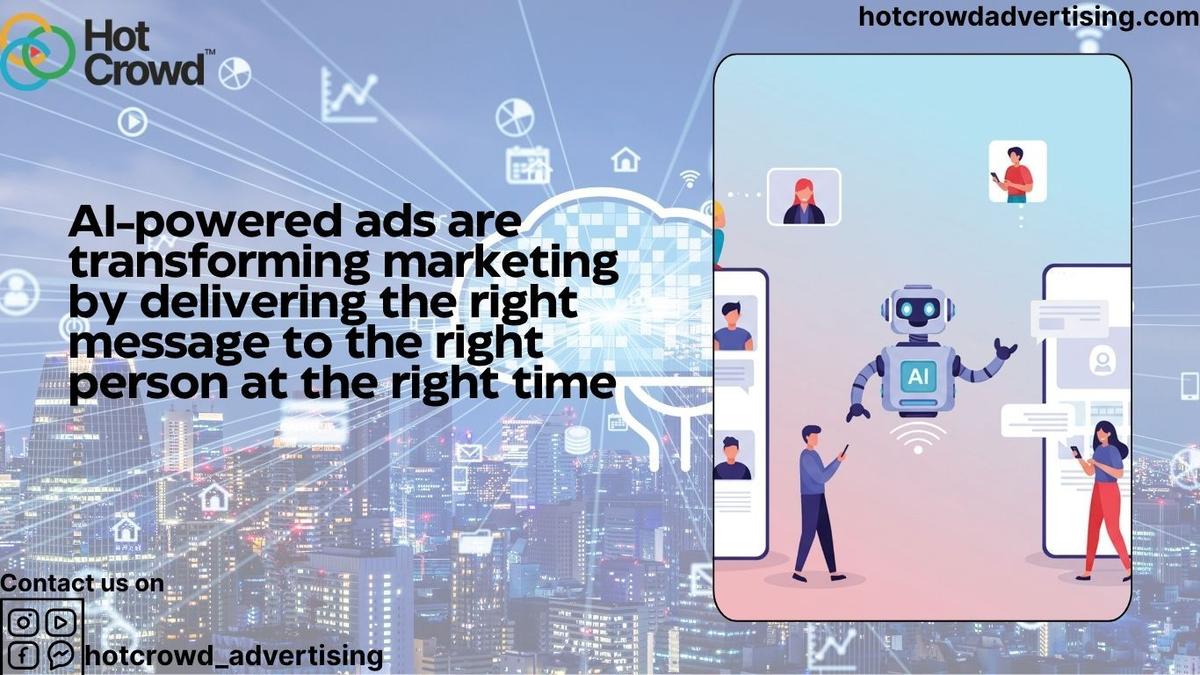AI-Powered Personalization: The Future of Targeted Advertising
Gift - Tue Jun 10 2025

In today’s fast-paced digital world, advertising is no longer about guessing what your audience might want, it's about knowing exactly what they need before they even do. Generic ads no longer make the cut. Thanks to AI-powered personalization, brands can now deliver hyper-targeted ads that feel tailor-made for each individual. This level of precision is transforming the ad industry and raising the bar for customer expectations.
Consumers demand relevance, and businesses that fail to deliver personalized experiences are quickly left behind. Enter AI-powered personalization the cutting-edge solution revolutionizing targeted advertising.
What Is AI-Powered Personalization?
AI-powered personalization uses artificial intelligence, machine learning, and data analytics to deliver highly tailored content. AI personalization in advertising refers to the use of machine learning, real-time data analysis, and predictive modeling to create highly relevant ad experiences for individual users. Unlike traditional segmentation, which groups users by broader characteristics, AI digs deeper, analyzing behaviors, preferences, purchase history, location, device usage, and even time of day to serve the right message at the right moment. Instead of serving the same ad to everyone, AI ensures that each user sees content most relevant to their needs and interests.
Why AI-Personalized Ads Work
1. Improved Engagement Rates:
AI-driven ads match a user’s current interests, making them more likely to click, watch, or engage. Studies show that personalized ads can increase click-through rates by up to 200% compared to generic content.
AI doesn’t just react; it predicts. By analyzing historical data, AI can anticipate user needs before they arise.
For example, if someone frequently shops for fitness gear, AI might recommend a new line of running shoes right before a big launch.
2. Higher Conversion Rates:
When customers see offers that align with their behaviors or past actions, conversion rates improve significantly. AI tracks micro-signals like browsing patterns or time spent on product pages to deliver ads that speak directly to intent.
3. Real-Time Optimization:
Traditional advertising relies on static audience segments. AI, however, analyzes data in real-time; browsing history, purchase behavior, device usage to deliver ads that adapt instantly to user behavior.
AI doesn't just personalize once; it adapts in real time. Campaigns can auto-optimize based on fresh data, meaning your ad spend becomes smarter over time, reducing waste and improving ROI.
4. Hyper-Segmentation:
Forget broad demographics. AI enables micro-targeting by breaking audiences into ultra-specific segments from dog owners who prefer organic food to night owls who binge sci-fi on weekends.
5. Improved ROI
When ads are relevant, they convert. AI increases click-through rates (CTR) and return on ad spend (ROAS) by ensuring every dollar spent targets the right person at the right time with the right message.
Real-World Applications
- E-commerce: Retailers use AI to recommend products based on past purchases or abandoned carts. Dynamic display ads now adjust content on the fly, showing each viewer a unique product lineup.
Example: Amazon’s recommendation engine is a classic example of AI personalization, driving up to 35% of its sales.
- Streaming & Entertainment Services: Services like Netflix or Spotify use AI to personalize content suggestions. Advertisers now follow suit, offering tailored trailers, playlists, or limited-time offers based on user listening or viewing habits.
- Email marketing: AI customizes subject lines, send times, and product suggestions to maximize engagement.
- Franchise and Local Businesses: Even smaller businesses can now use AI tools to localize and personalize their ads. Platforms like Meta, Google Ads, and programmatic networks offer plug-and-play personalization features powered by AI.
Best Practices for AI-Powered Targeted Advertising
1. Start with Clean, Rich Data: The more accurate your first-party data, the better the personalization outcomes. Invest in data hygiene and smart tracking.
2. Test and Train the AI: Use A/B testing and feed results into your AI system to help it learn which messages resonate best.
3. Protect Privacy: Consumers expect transparency. Use ethical AI advertising practices, comply with GDPR and CCPA, and always offer opt-outs.
4. Avoid Over-Personalization: Ads that feel too invasive can backfire. Strike the right balance between relevance and respect.
5. Invest in the Right Tools: Use platforms like Google Ads AI, Meta Advantage+, or third-party personalization engines.
6. Leverage First-Party Data: With the phasing out of third-party cookies, your customer data is more valuable than ever.
7. Create Dynamic Content: Design ads that can change based on user interaction.
Key Benefits of AI-Powered Personalization in Advertising
- Enhanced user experience
- Increased conversion rates
- Reduced customer acquisition cost
- Deeper customer insights
- Scalable personalization
The Future Is Hyper-Personalized
The days of one-size-fits-all campaigns are over. With the rise of AI in digital advertising, marketers can now reach consumers in a way that’s both personal and scalable. Whether you're running a national brand or a local franchise, leveraging AI personalization tools can significantly increase your ad performance and customer satisfaction.
Final Thoughts
AI-powered personalization isn’t just a trend, it’s the future of digital advertising. Brands that adopt it now will not only stand out in the crowded marketplace but also build stronger, more meaningful connections with their audience. As customer expectations evolve, personalized experiences powered by AI will be the gold standard in ad tech.
Want to explore AI-driven ad solutions for your business? At HotCrowd, we help brands and franchises unlock the full potential of AI advertising. To get started